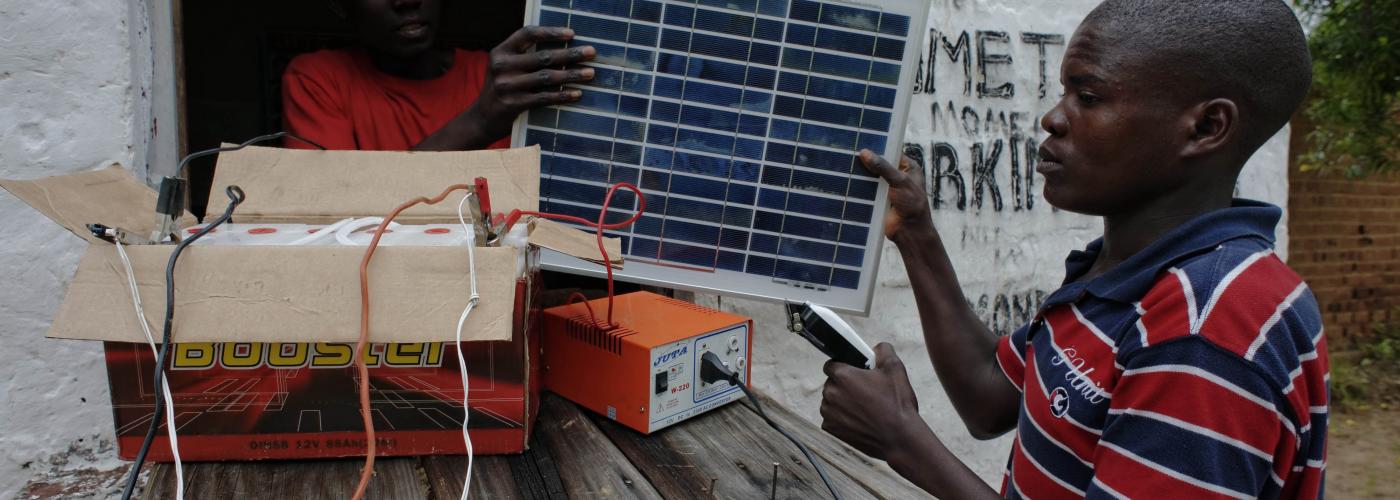In Search of Greener Pastures: How Can MSD Projects Better Integrate Environmental Considerations?
Image

This blog was originally posted on BEAM Exchange and was written by Isaac Cowan-Gore.
Recognition and use of the MSD approach has come a long way since its inception in the early 2000s. More and more private sector development projects are integrating elements of MSD - if not the whole package - and applying it in increasingly diverse contexts to address a growing number of development challenges such as improving working conditions or supporting refugee livelihoods. However, a major question mark - the elephant in the room some might say - remains: what about MSD and the natural environment?
Many perceive environmental considerations as a burden to market development efforts and treat it as a box ticking exercise, while others question the suitability of the MSD approach to drive environmental sustainability. Fortunately, some have trailblazed and advanced both environmental and socio-economic outcomes (especially decent work) using the MSD approach. In this guidance note - Market systems development and the environment - recently published by The Lab, the experiences of five such projects show that MSD initiatives can indeed play a crucial role in helping the private sector identify and take advantage of win-win opportunities, ultimately supporting the emergence of greener and more resilient economies.
However, this is not an easy task. In 'conventional' MSD sectors, such as agriculture, the business case for 'environmental upgrading' is often weak or at least not immediately apparent. Supporting the diffusion of environmental goods and services such as renewable energy products or organic agricultural inputs can also be especially challenging in developing countries where markets for such products are nascent and projects often have to build them from the ground up.
To beat the odds and achieve environmental objectives, projects must take strategic, pro-active steps spanning across the entire project cycle including in project design, sector selection, market analysis, intervention strategy and intervention design. Here are some tips for your project:
Project design
First off, projects must make sure that they have clarity and buy-in among project staff and stakeholders relative to their environmental objectives and their importance compared to other project objectives. Without this, onboarding environmental considerations when it really matters - whether during sector selection, market analysis or implementation - will likely be challenging.
Sector selection
Sector selection is a key strategic decision that can go a long way in enabling projects to ultimately achieve environmental objectives. To this end, MSD projects should include environmental sector selection criteria which may relate to the focal value chain’s negative environmental impacts and potential for improvement, its potential to advance green growth, or its vulnerability to environmental degradation and climate change.
Market systems analysis
When seeking to stimulate growth in ‘green’ sectors, MSD practitioners can essentially apply market systems analysis as they would with any other sector aside from certain tweaks such as paying extra attention to ‘environment relevant’ stakeholders like the Ministry of Environment. When it comes to other environmental objectives, however, 'traditional' market systems analysis methodologies should be complemented by environment related analysis. Such analysis should ultimately enable projects to identify and evaluate environmental impacts and/or vulnerabilities in and around their sector, and prioritise upgrading solutions that can improve environmental sustainability and resilience as well as advance decent work or other socio-economic outcomes.
Intervention strategy - supporting change in the enabling environment
Projects typically encounter many broadly conceived 'enabling environment' constraints to 'green' investment and innovation such as significant infrastructure and skills gaps, or weak awareness of environmental issues and solutions. This can be particularly challenging for MSD projects given that addressing these constraints often requires government intervention or collective action among private sector actors, which can be time-consuming and is not necessarily the strong suit of MSD projects either. As such, MSD projects should determine early on if they will tackle 'enabling environment' constraints and, if so, focus their efforts on what is most feasible, most critical to boost green sector development and most conducive to 'win-wins'.
Intervention strategy - leveraging market dynamics
'Green' sectors such as renewable energy or recycling are often quite thin in developing countries - providers are few, distribution networks under-developed, and market penetration low. To properly support market development, projects must therefore often work on many fronts - stimulating supply, demand and linkages in between. With limited resources, however, projects must think strategically. To stimulate demand, for instance, projects can support government or business associations to lead marketing / awareness-raising campaigns but also support green enterprises to better target their products to high potential, early adopter customer segments that can bring visibility and attract others to follow suit.
Intervention design - leveraging business-level incentives
At a more granular level, projects must highlight and leverage the potential of targeted 'green' practice changes to improve the bottom line of enterprises. For instance, a project trying to 'green' agriculture might promote a switch from chemical to organic inputs by highlighting its potential to decrease costs or by supporting relevant certification and access to markets where customers are willing to pay premiums for more sustainable products. In the absence of clear, achievable economic benefits for enterprises, practice changes run the risk of being sustained only by continued donor support and to struggle to spread in the wider market.
Conclusion
Trade-offs between environmental and socio-economic outcomes are not inevitable. In fact, in many instances, sizeable win-wins exist, and MSD initiatives can play a crucial role in helping realise these opportunities. Now is the time to Build Back Better, and doing so also means giving greater importance to environmental considerations.
If you find yourself struggling with how to address environmental objectives in your MSD project, build on the lessons from other MSD projects which have done so already, in MSD & the environment: a strategic and operational guidance note.


